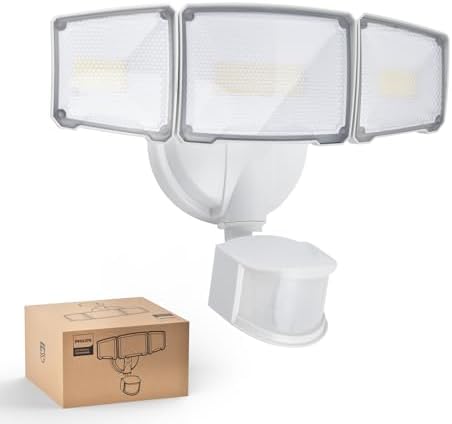Potholes are a common sight on American roads, especially during and after harsh winter months. They’re more than just an annoying bump in a road; they can damage vehicles, disrupt traffic, and create real safety hazards. Understanding why potholes form, how they affect vehicles, and why timely repairs are essential can help all of us become more informed drivers and citizens. This article dives into science behind potholes, their impact on road safety, and a importance of repairing them as soon as possible.
Why Do Road Cracks and Dips Form?
Road surface damage does not happen randomly; it is a result of specific factors that wear down pavement over time. Here is how that damage typically starts and grows:
Water Seepage
Water is a major culprit. When rain, snow, or ice enters small cracks in a road surface, it weakens underlying materials. This moisture causes serious harm, especially once temperatures drop and freezing occurs.
Freeze-Thaw Effect
In colder climates, trapped water within road cracks freezes and expands, forcing those cracks wider. Once temperatures rise again, ice melts, leaving behind weakened gaps. This freeze-thaw cycle is a primary reason cracks worsen and become holes, especially in winter.
Heavy Traffic Loads
Roads are designed to handle certain weights, but over time, heavy vehicles like trucks and buses accelerate wear and tear. On pavement with existing cracks, this pressure breaks surfaces further, loosening material until chunks come out.
Poor Drainage
Roads need proper drainage systems to channel water away from surfaces. When water cannot drain, it pools and seeps into cracks, speeding up damage. Low-lying areas or spots near curbs where water collects are especially vulnerable.
Quality of Materials and Construction
Some cracks result from inferior road construction or use of subpar materials. A well-built road with quality materials can withstand heavy traffic and various weather conditions. Roads made with cheaper materials, however, are more prone to cracking and damage.

Aging Infrastructure
Roads don’t last forever. Over time, exposure to traffic, weather, and other elements weakens them. Older roads, particularly, have cracks that provide an entryway for water and other elements, making them more susceptible to damage.
How Cracked and Damaged Roads Affect Safety
Road damage does not just make for a bumpy ride; it creates real risks for everyone on a road, from drivers and motorcyclists to pedestrians. Here is a breakdown of potential dangers:
Vehicle Damage
Driving over road cracks or dips at high speeds can cause immediate harm to vehicles, and repeated exposure worsens issues. Here is how it impacts various vehicle parts:
Tires: Road dips can cause punctures, bulges, or even full blowouts, especially on worn tires. Frequent contact with damaged pavement also wears tires down faster, decreasing their grip and increasing a chance of sliding in wet conditions.
Suspension and Alignment: While car suspensions are designed to absorb shocks, major jolts from rough roads can throw off alignment, making steering harder and leading to uneven tire wear. In extreme cases, a suspension itself may become damaged, resulting in costly repairs.
Rims and Wheels: A force from hitting a road dip can dent or crack vehicle rims, especially alloy or aluminum ones. Damage to rims can lead to air leaks and may require a full wheel replacement.
Higher Risk of Accidents
Road damage can significantly increase accident risk. For instance, when drivers suddenly spot a crack or dip, instinct often makes them swerve. This quick maneuver can cause collisions with nearby vehicles, especially on busy streets. Additionally, losing control after hitting a road depression can lead to skidding or veering off-course, raising accident risks.
Increased Danger for Motorcyclists and Cyclists
For motorcycle and bicycle riders, road damage is even more dangerous. With only two wheels on a road, hitting a crack or dip can cause a complete loss of balance, resulting in severe injuries or worse. In areas with heavy motorbike or bicycle traffic, damaged roads create a significant hazard.
Pedestrian Safety Concerns
Cracks and uneven surfaces near sidewalks or crosswalks pose risks for pedestrians. Individuals might trip over uneven areas, especially if not watching closely. This is particularly concerning for elderly people or those with limited mobility.
Traffic Slowdowns and Congestion
When multiple areas of a road are damaged, traffic slows as drivers navigate around worst spots. This cautious driving can cause congestion, especially during peak hours, and can sometimes lead to detours if road damage forces temporary closures.
The Importance of Timely Road Repairs
Given how damaged roads can harm vehicles, disrupt traffic, and create safety issues, timely repairs are essential. Here’s why addressing road damage as soon as possible is a wise choice:
Prevent Escalation of Damage
When road damage goes unfixed, it typically grows larger. What starts as a minor crack can easily turn into a bigger hole, requiring more time, materials, and money to fix. Prompt repairs prevent this costly escalation and help maintain safer roads.

Lower Repair Costs for Drivers
As noted, road damage can cause harm to vehicles and unexpected repair bills. Fixing road issues quickly reduces this risk, saving drivers money over time and cutting down on complaints.
Improved Community Perception
When roads are in poor condition, residents can feel frustrated and question where tax dollars go. Neglected roads can make a neighborhood look rundown, while prompt repairs show that local leaders care about maintaining infrastructure and addressing resident concerns.
Better Traffic Flow and Safety
Timely road repairs improve traffic flow by eliminating a need for drivers to slow down or swerve around dips and cracks. This also reduces accident risks caused by poor road conditions, enhancing overall safety for everyone.
Positive Economic Impact
Quality roads help local economies thrive. Smooth roads improve transportation efficiency for companies, attract visitors, and make an area more appealing to new businesses. When infrastructure is neglected, it can deter potential investors and lower overall quality of life for residents.
Common Methods for Fixing Road Damage
An approach to repairing road cracks and dips depends on climate, budget, and damage extent. Here are some of a most common methods:
Throw-and-Go Method
This is a quick, temporary fix where crews pour a cold asphalt mix into road damage, tamp it down, and leave it. It works for a short term but is not intended to last, as a cold mix breaks apart easily under heavy traffic.
Semi-Permanent Repair
Crews begin by clearing out debris and water, cutting clean edges around a damaged area, filling it with a hot or cold asphalt mix, and compacting it. Though more labor-intensive, this method provides a more durable fix and a better seal against water.
Spray-Injection Patching
This technique uses a machine to spray an asphalt emulsion and aggregate into a crack. It is a quick, efficient option that requires less manual labor and works well for small cracks or dips on busy roads.
Full-Depth Patching
In cases where road damage is extensive, full-depth patching may be needed. This involves removing both pavement and underlying materials before filling a area with fresh asphalt and compacting it. It is a most thorough and permanent solution, though it is also more costly and time-consuming.
Infrared Repair
Using infrared heat, crews soften a road surface around a crack, allowing new asphalt to blend seamlessly into an existing surface. This method is effective for producing a smooth repair and works well in colder climates.
In Conclusion
Road surface damage is more than a cosmetic issue. From causing vehicle damage and traffic disruptions to increasing accident risks, it affects everyone. By understanding its causes and consequences, we can better appreciate why timely repairs are so crucial. Investing in prompt road maintenance improves safety, saves money, and helps communities thrive. Quality roads keep everyone safe and contribute to a well-functioning, efficient transportation system, ultimately benefiting all who use our roads.






